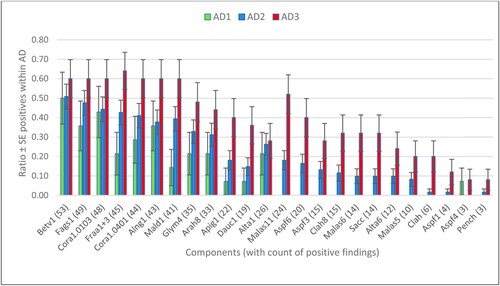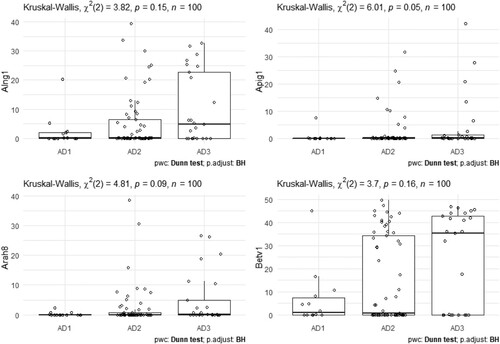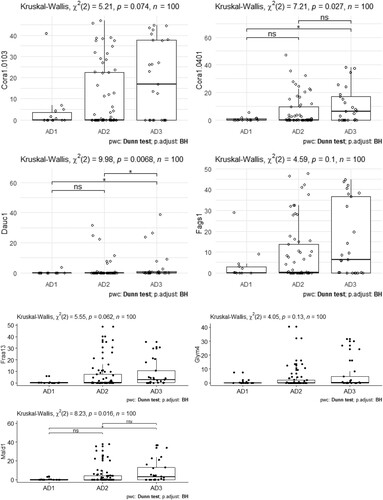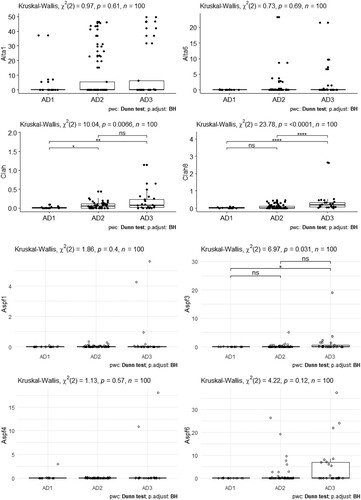Figures & data
Graph No. 1. The relative frequency of positive results to molecular components of PR 10 proteins, moulds and yeast, the frequency of mild (AD 1), moderate (AD 2) and severe forms of AD (AD 3), the frequency of asthma bronchiale (AB) and allergic rhinitis (AR).

Table 1. The characteristic of patients.
Graph No. 2. The relative frequencies of positive specific IgE to molecular components of PR 10 proteins and moulds, yeast in mild (AD 1), moderate (AD 2) and severe forms (AD 3) of AD.

Table 2. Sum of positive allergens of PR 10 respectively mould, yeast per patient in AD 1 (mild form), AD 2 (moderate form) and AD 3 (severe form) groups. The significant relation is recorded extra bold*.
Table 3. The set of 31 significant rules. These rules are sorted in decreasing order by support.
Table 4. Comparisons of relative frequencies of 31 significant rules within AD groups (AD 1 – mild form, AD 2 – moderate form, AD 3 – severe form of atopic dermatitis, AR – allergic rhinitis, AB – asthma bronchiale); p- values were adjusted for multiple testing (Benjamini–Hochberg = B-H).
Table 5. Coefficient of correlation (Kendall tau-b) between PR 10, mould, yeast allergens.




